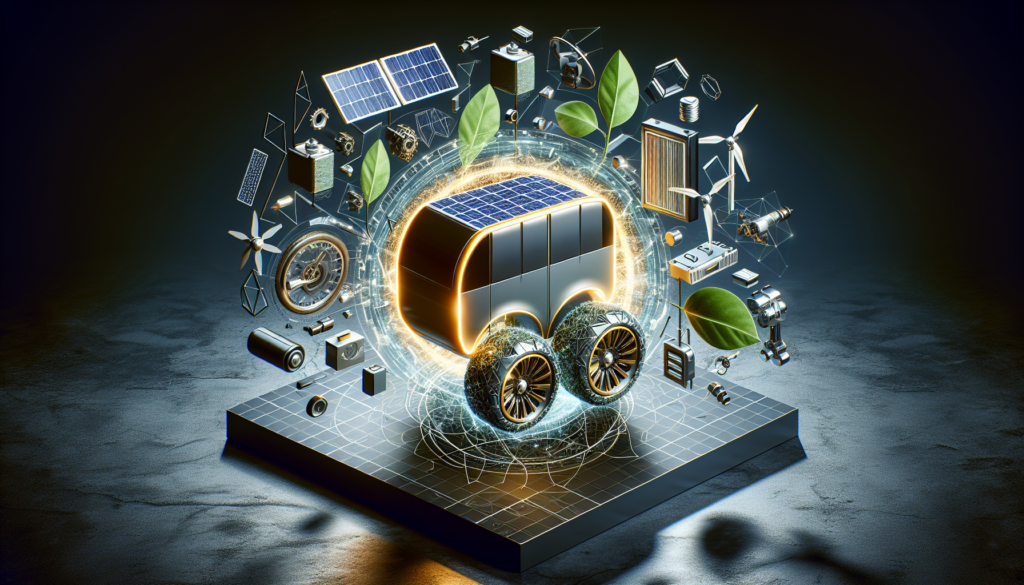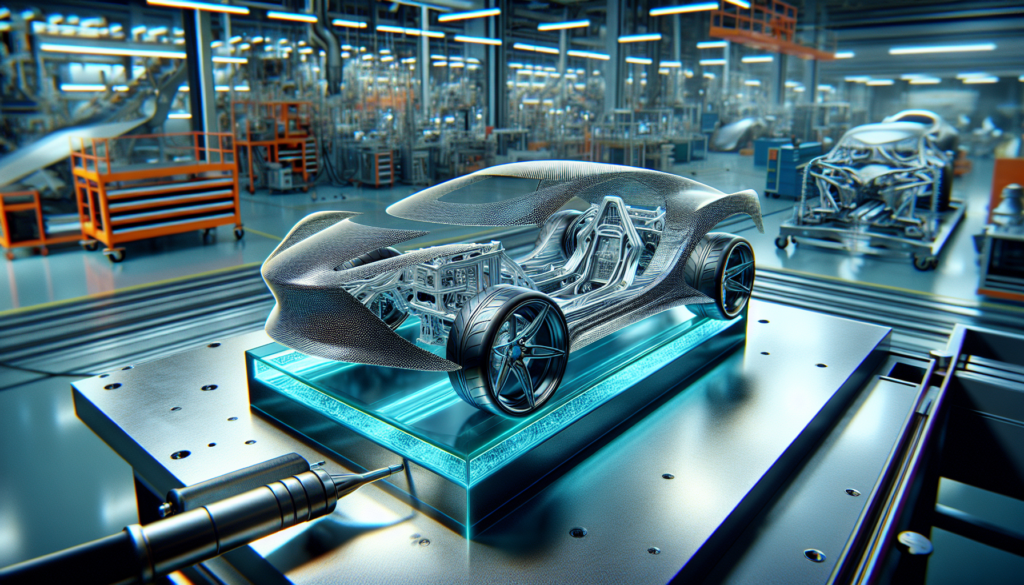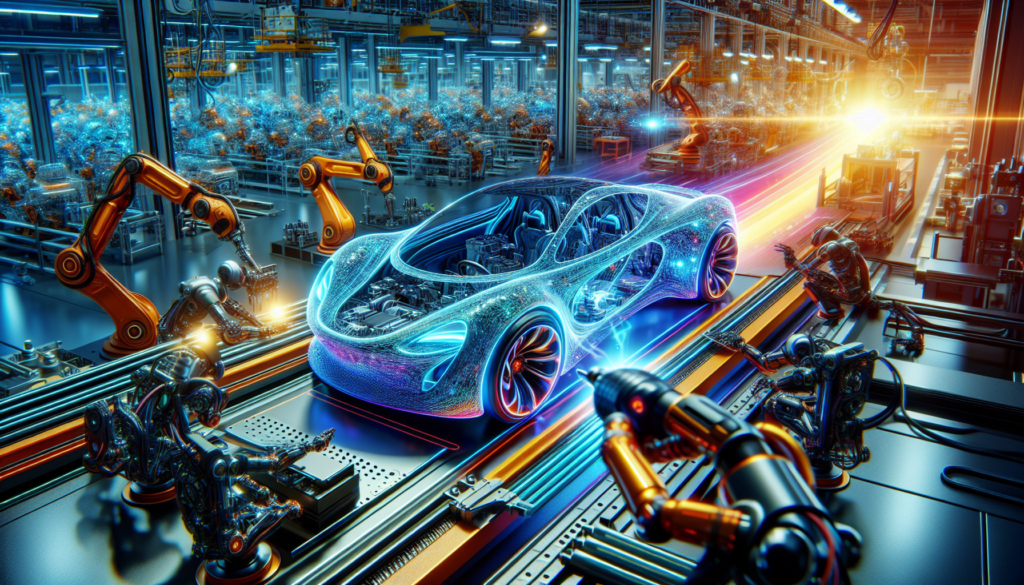Have you ever wondered what materials are being used to build lightweight electric vehicles (EVs) these days? With advancements in technology and increasing demand for more sustainable transportation options, manufacturers are constantly exploring innovative materials that can make EVs lighter and more energy-efficient. From carbon fiber composites to aluminum alloys, these new materials not only reduce the weight of the vehicle, but also enhance its overall performance and range. Let’s take a closer look at some of the exciting developments in the world of lightweight EV construction.
Overview
When it comes to lightweight EV construction, the automotive industry is constantly exploring new materials that offer improved performance, efficiency, and sustainability. From carbon fiber reinforced polymers (CFRP) to high-strength steel, there are several materials making their mark in this field. In this article, we will explore various materials being used for lightweight EV construction, including their benefits, challenges, and recent advancements.
1. Carbon Fiber Reinforced Polymers (CFRP) Usage
1.1 Benefits of CFRP
CFRPs have gained significant attention in the automotive industry due to their exceptional strength-to-weight ratio. These lightweight materials offer high stiffness, which not only enhances the overall vehicle performance but also reduces fuel consumption. Additionally, CFRPs can be molded into complex shapes, providing more design flexibility for EV manufacturers. Moreover, CFRPs have excellent corrosion resistance, making them an ideal choice for long-lasting and durable EV components.
1.2 Challenges with CFRP
While CFRPs offer numerous benefits, there are a few challenges associated with their usage. Firstly, the high cost of carbon fiber materials makes CFRPs relatively expensive compared to traditional materials like steel or aluminum. This cost factor poses a challenge for widespread adoption in the automotive industry. Additionally, CFRPs can be susceptible to impact and damage, requiring proper maintenance and repair. Furthermore, the recycling and disposal processes for CFRPs need further development to ensure sustainability throughout the lifecycle of EVs.
1.3 Advancements in CFRP Usage
Despite the challenges, advancements in CFRP usage continue to drive innovation in lightweight EV construction. Researchers and manufacturers are developing new carbon fiber materials that possess enhanced properties while maintaining cost-effectiveness. Furthermore, improvements in manufacturing techniques, such as automated fiber placement and preforming, have increased production efficiency and reduced costs. Additionally, recycling technologies for CFRPs are being refined, enabling more sustainable practices. As a result, CFRPs are becoming increasingly viable for widespread adoption in lightweight EV construction.

2. Aluminum Alloys
2.1 Advantages of Aluminum Alloys
Aluminum alloys have been a popular choice in the automotive industry for their lightweight properties and excellent corrosion resistance. Their low density relative to steel allows for significant weight reduction, leading to improved energy efficiency and extended battery range. Moreover, aluminum alloys can be easily formed into complex shapes, providing greater design options for EV manufacturers. Additionally, these alloys offer good recyclability, contributing to the overall sustainability of EV production.
2.2 Limitations of Aluminum Alloys
Despite their numerous advantages, aluminum alloys also have limitations that need to be considered. One primary concern is their lower strength compared to steel, requiring appropriate design considerations to ensure structural integrity. Aluminum alloys are more prone to deformation or fatigue failure, especially in high-stress areas. Moreover, the energy-intensive manufacturing processes for aluminum alloys contribute to higher carbon emissions during production.
2.3 Innovations in Aluminum Alloy Development
To overcome the limitations, ongoing research and development efforts are focused on enhancing the strength and performance of aluminum alloys. Novel alloy compositions and heat treatment methods are being explored to achieve improved mechanical properties, such as higher tensile strength and fatigue resistance. Furthermore, advanced joining techniques, such as friction stir welding, are being utilized to enhance the structural integrity of aluminum alloy components. These innovations pave the way for wider adoption of aluminum alloys in lightweight EV construction, aiming to address both performance and sustainability concerns.
3. Magnesium Alloys
3.1 Benefits of Magnesium Alloys
Magnesium alloys have gained attention in the automotive industry due to their exceptional lightweight properties. With a density even lower than aluminum, magnesium alloys offer further weight reduction opportunities for EVs, contributing to improved energy efficiency and increased battery range. Moreover, magnesium alloys have excellent vibration-damping characteristics, resulting in a smoother and more comfortable ride. Additionally, these alloys possess good recyclability, aligning with sustainable manufacturing practices.
3.2 Drawbacks of Magnesium Alloys
However, there are certain drawbacks associated with magnesium alloys that must be addressed. One major concern is their susceptibility to corrosion, especially in harsh environmental conditions. This requires appropriate protective coatings or alloy compositions to ensure long-term durability. Moreover, magnesium alloys can exhibit reduced strength at elevated temperatures, limiting their application in areas exposed to high thermal loads. Furthermore, the higher cost of magnesium compared to other lightweight materials presents a challenge for widespread utilization.
3.3 Progress in Magnesium Alloy Applications
To overcome these challenges, researchers are focusing on developing new magnesium alloys with enhanced corrosion resistance and higher strength at elevated temperatures. Furthermore, surface treatment methods and coatings are being explored to provide effective corrosion protection for magnesium alloy components. Additionally, advancements in manufacturing processes and cost-effective production techniques are being pursued to make magnesium alloys more commercially viable. As a result, we can expect to see increased utilization of magnesium alloys in lightweight EV construction in the future.

4. High-Strength Steel
4.1 Advantages of High-Strength Steel
High-strength steel (HSS) is another material gaining recognition for its excellent strength and lightweight properties. HSS offers superior crash resistance while reducing the overall weight of the vehicle, enhancing occupant safety without compromising fuel efficiency. Due to their high strength, HSS components can be designed with thinner sections, further reducing weight and increasing interior space. Moreover, HSS exhibits good formability, allowing for more complex shapes and innovative vehicle designs.
4.2 Challenges with High-Strength Steel
Despite its advantages, high-strength steel also presents some challenges. One challenge lies in the cost-effectiveness of HSS, as the production processes for these advanced steels can be more complex and energy-intensive compared to conventional steel. Additionally, the higher levels of carbon and alloying elements in HSS can make it more difficult to weld and join, requiring specialized techniques and equipment.
4.3 Recent Advances in High-Strength Steel Utilization
To address these challenges, significant advancements have been made in high-strength steel production and application. New manufacturing processes, such as hot-stamping and tailored-blank welding, have been developed to improve the formability and weldability of high-strength steel. Additionally, the development of advanced high-strength steels (AHSS) with improved strength and elongation properties has led to further weight reduction and enhanced crash performance in EVs. These recent advances pave the way for wider adoption of high-strength steel in lightweight EV construction.
5. Polymer-Based Composites
5.1 Benefits of Polymer-Based Composites
Polymer-based composites offer a unique combination of lightweight properties, high strength, and design flexibility. By combining different reinforcing fibers, such as glass or carbon, with a polymer matrix, these composites can achieve excellent mechanical properties while maintaining a low weight. The use of polymer-based composites in EV construction allows for weight reduction and increased energy efficiency. Moreover, the inherent corrosion resistance and durability of polymer composites make them suitable for long-term use in various EV components.
5.2 Limitations of Polymer-Based Composites
However, several limitations must be considered when utilizing polymer-based composites in EV construction. One challenge is the relatively higher cost of these composites compared to traditional materials such as steel or aluminum. Additionally, the manufacturing processes for polymer composites can be complex, requiring specialized equipment and expertise. Furthermore, the recyclability and disposal of polymer-based composites need to be carefully managed to ensure sustainability.
5.3 Innovations in Polymer-Based Composite Technologies
To address the challenges, ongoing research and development efforts are focused on improving the cost-effectiveness and recyclability of polymer-based composites. Advanced manufacturing techniques, such as automated composite production and out-of-autoclave processes, are being developed to increase efficiency and reduce costs. Furthermore, advancements in recycling technologies are being pursued to enable more sustainable end-of-life management of polymer composites. These innovations contribute to the continuous improvement of polymer-based composites and their utilization in lightweight EV construction.

6. Natural Fiber Composites
6.1 Advantages of Natural Fiber Composites
Natural fiber composites offer an alternative to synthetic materials by utilizing plant-based fibers, such as flax, hemp, or bamboo, in a polymer matrix. These composites offer several advantages, including low density, good mechanical properties, and improved sustainability. Natural fiber composites are lightweight, contributing to energy efficiency and extended battery range in EVs. Moreover, the growth and cultivation of natural fibers are environmentally friendly, reducing the carbon footprint of the materials.
6.2 Drawbacks of Natural Fiber Composites
Despite their advantages, natural fiber composites also have certain limitations. One concern is their relatively lower strength and stiffness compared to synthetic fiber composites or metals. This limitation needs to be carefully considered during the design and selection of components. Additionally, the moisture absorption characteristics of natural fibers can impact the long-term durability and dimensional stability of the composites. Furthermore, the availability and consistent quality of natural fibers for large-scale production can pose challenges.
6.3 Progress in Natural Fiber Composite Implementation
Significant progress has been made in improving the mechanical properties and performance of natural fiber composites. Researchers are investigating different fiber treatments and surface modifications to increase the strength and stiffness of natural fibers. Furthermore, the combination of natural fibers with synthetic fibers or advanced hybrid matrices is being explored to enhance the overall properties of the composites. Efforts are also being made to develop reliable and sustainable supply chains for natural fibers to ensure consistent quality in large-scale production. These advancements contribute to the increasing implementation of natural fiber composites in lightweight EV construction.
7. Ceramic Matrix Composites (CMCs)
7.1 Benefits of CMCs
Ceramic matrix composites (CMCs) offer a unique combination of high-temperature resistance, lightweight properties, and excellent mechanical strength. CMCs are composed of a ceramic matrix, typically reinforced with fibers such as silicon carbide or carbon. The exceptional temperature resistance of CMCs makes them suitable for high-temperature applications in EVs, such as in exhaust systems or brake components. Moreover, CMCs exhibit low thermal expansion, resulting in improved dimensional stability and reduced thermal stress.
7.2 Challenges with CMCs
However, CMCs face certain challenges in terms of their production and usage. The manufacturing processes for CMCs can be complex and costly, requiring specialized equipment and expertise. The brittleness of ceramics poses challenges for their use in structural applications, requiring the consideration of design modifications and reinforcements. Additionally, the potential for thermal shock or degradation under extreme conditions needs to be addressed to ensure the long-term reliability of CMC components.
7.3 Developments in CMC Applications
To overcome these challenges, ongoing developments are focused on improving the manufacturing processes and design capabilities of CMCs. Advanced fabrication techniques, such as chemical vapor infiltration and rapid prototyping, are being utilized to enhance production efficiency and reduce costs. Furthermore, research efforts are focused on introducing fiber architectures or coatings to increase the toughness and durability of CMC components. These developments aim to expand the application of CMCs in lightweight EV construction, particularly in high-temperature environments.

8. Hybrid Materials
8.1 Advantages of Hybrid Materials
Hybrid materials involve combining two or more different materials to create composites with improved properties. By utilizing the strengths of each material, hybrid composites offer enhanced performance, better functionality, and increased weight reduction. These composites can combine different combinations, such as steel-aluminum hybrids or fiber-metal laminates. Hybrid materials provide an excellent balance between strength, stiffness, and weight, making them suitable for various EV components.
8.2 Limitations of Hybrid Materials
Despite their advantages, hybrid materials have certain limitations to consider. The manufacturing processes for hybrid composites can be complex and require careful optimization to achieve the desired properties. Additionally, the different material compatibility and coefficients of thermal expansion can pose challenges in terms of joint integrity and long-term reliability. Moreover, the cost of producing hybrid materials needs to be carefully balanced with their performance benefits to ensure commercial viability.
8.3 Innovations in Hybrid Material Combinations
Innovative research is focused on advancing the development and utilization of hybrid materials in lightweight EV construction. New joining techniques, such as adhesive bonding or friction stir welding, are being explored to improve the integrity of hybrid composites. Additionally, the combination of novel materials, such as carbon fiber reinforced aluminum hybrids, is being studied to achieve further weight reduction without compromising strength. These innovations in hybrid material combinations contribute to the continuous improvement of lightweight EV construction.
10. Other Promising Materials
10.1 Graphene
Graphene, a single layer of carbon atoms arranged in a hexagonal lattice, has gained significant attention for its exceptional mechanical, thermal, and electrical properties. Graphene offers excellent strength, stiffness, and thermal conductivity, making it a promising material for lightweight EV construction. Its high electrical conductivity also supports the development of advanced battery technologies. However, further research and development are needed to overcome challenges related to large-scale production, cost-effectiveness, and integration into existing manufacturing processes.
10.2 Nanomaterials
Nanomaterials, such as carbon nanotubes and nanofibers, offer unique properties and potential benefits for lightweight EV construction. These materials exhibit high strength, excellent thermal and electrical conductivity, and large surface areas. Nanomaterials can be incorporated into various matrices, such as polymers or metals, to enhance their mechanical properties. Additionally, nanomaterials can contribute to the development of energy storage devices and advanced sensors in EVs. However, challenges related to cost, scalability, and potential health and environmental risks need to be carefully addressed during their implementation.
10.3 Titanium
Titanium alloys have long been utilized in aerospace applications for their exceptional strength-to-weight ratio and corrosion resistance. The lightweight properties and high strength of titanium make it an attractive material for lightweight EV construction. Titanium allows for weight reduction while maintaining structural integrity and durability. However, the high cost of titanium and the associated manufacturing challenges have hindered its widespread use in the automotive industry. Ongoing research focuses on optimizing fabrication processes and reducing costs to make titanium more economically viable for EV applications.
10.4 Shape Memory Alloys
Shape memory alloys, such as nickel-titanium (Nitinol), exhibit unique characteristics that make them suitable for lightweight EV construction. These alloys can undergo reversible, temperature-induced shape changes, allowing for the development of self-healing or adaptive structures. Shape memory alloys offer enhanced fatigue resistance and excellent damping properties, contributing to improved vehicle performance and comfort. However, challenges related to cost, processing, and shape memory effects need to be carefully considered during their integration into EV components.
In conclusion, the automotive industry continues to explore and develop new materials for lightweight EV construction. From carbon fiber reinforced polymers to natural fiber composites, each material offers unique benefits and challenges. Researchers and manufacturers are making significant advancements in material development, manufacturing processes, and cost-effectiveness to ensure the widespread adoption of these materials in the future. By leveraging the advantages of lightweight materials, EVs can achieve improved performance, increased energy efficiency, and a reduced environmental impact.

